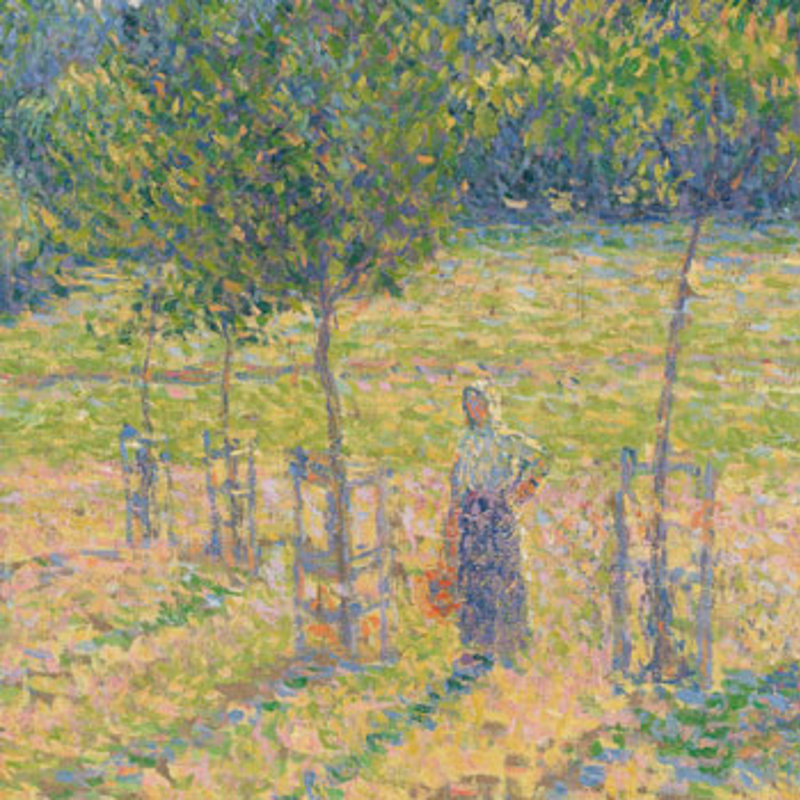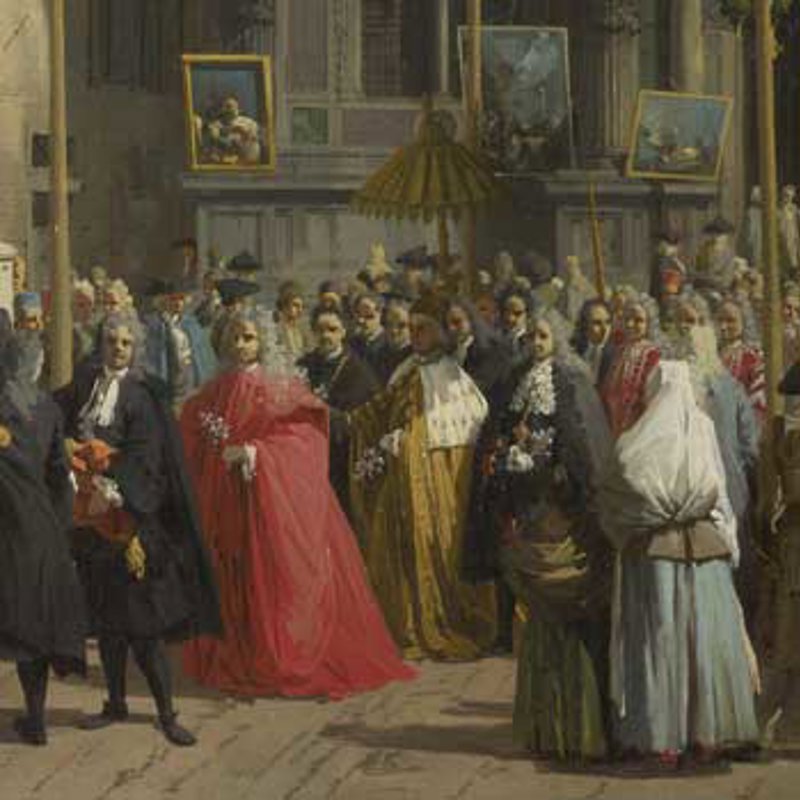It’s a bleak winter's day, down on the frozen waterfront of the East River in Brooklyn. Men huddle, their hands thrust into their pockets and their jacket collars turned up against the bitter chill.
It’s been a long, cold wait for these day labourers, anxious to hear if they will be offered work today, loading and unloading cargo from the docked ocean liner. The work is low-paid and uncertain. In 1912, when this painting was made, longshoremen earned around $10–22 a week, while a budget apartment in New York cost around $10 a week.
Look closely at the figures of the men, and you can see that their faces are suggested by just a few strokes of paint. The men are sketchily painted, yet, their body language – hunched shoulders, hands in pockets, an anxious glance over a shoulder – conveys their mood. We sense that they are listening to an announcement – perhaps a roll call of names of those to be employed that day.
On the left, a man appears to be leaving, perhaps having been told he has not been chosen. Isolated from the group, he is shown, head bowed and deep in shadow, giving us a sense of his rejection. Will there be food on the table for his family that night? And do the others look at him with sympathy, pity or relief that it's not them?
Across the river, we see the skyline of lower Manhattan – representing the beating heart of modern capitalism; the corporate centre of the global industrial powerhouse that the United States had rapidly become. Yet the allure of Manhattan, across the distant Brooklyn Bridge, seems remote from us, separated by an expanse of unforgiving, icy water. In New York, some of the world’s wealthiest individuals rubbed shoulders with the very poor. While companies competed to build the tallest and most dazzling skyscrapers, the immigrants and working-class Americans who helped construct the city, lived in crowded tenements and slum conditions.
This painting was made in the same year as the sinking of the Titanic and the huge-steam powered ocean liner in the painting would have had luxury accommodation for the rich, while lower class travellers had separate accommodation below deck, sometimes hundreds sleeping in bunkbeds, in a large communal hold. Immigrants from across the globe would often arrive on liners like this, those from Europe travelling first to Britain, and then on to the US. Ships like these were very much in the public consciousness, not only as examples of human ingenuity and progress, but also as reminders of the dangers of the open sea.
This painting may prompt us to think of the social disparities of our own time, from the plight of refugees and their perilous journeys, to the fact that the average CEO of a FTSE 100 company will have already earned as much as the average worker’s annual salary within the first three working days of January.














